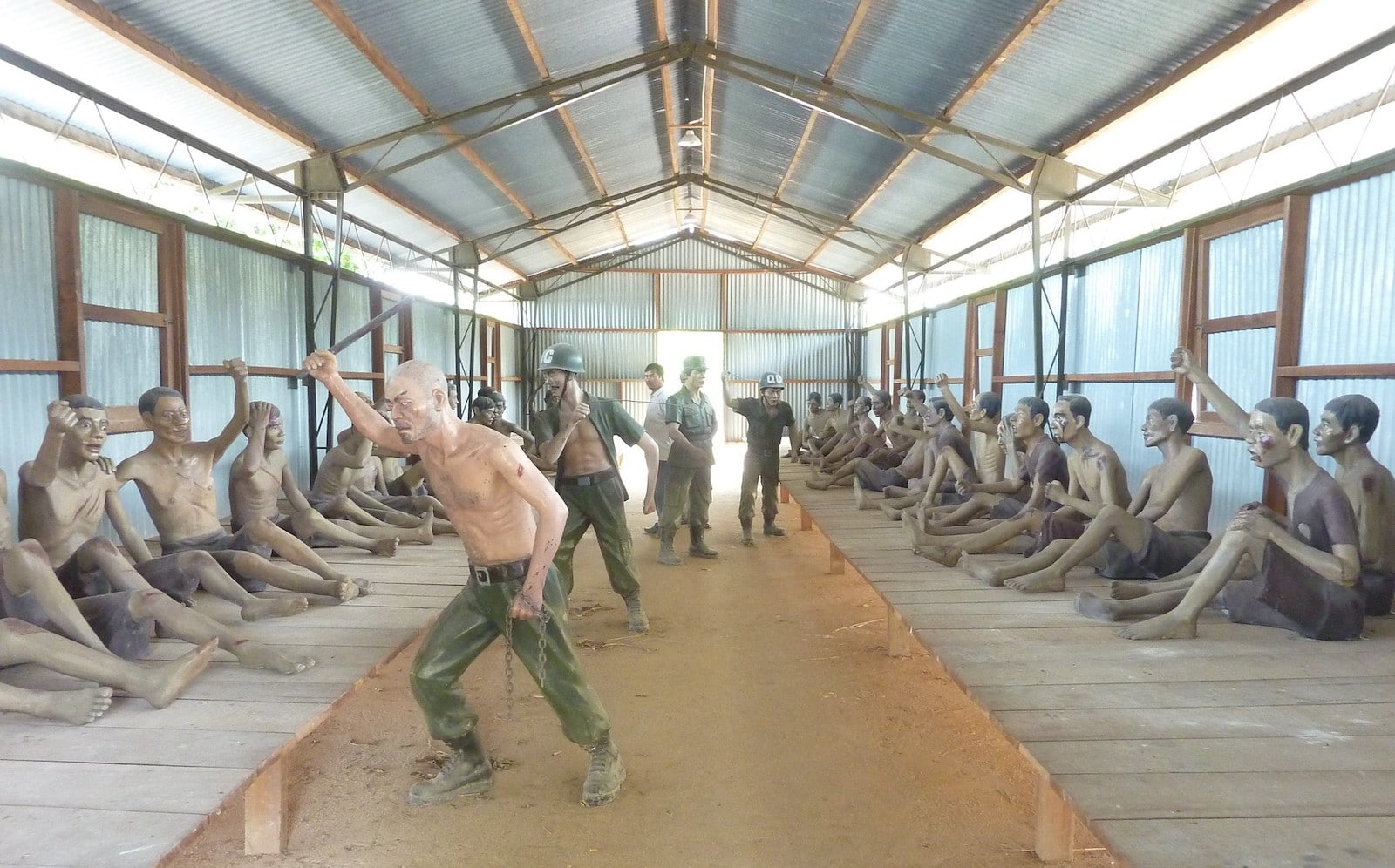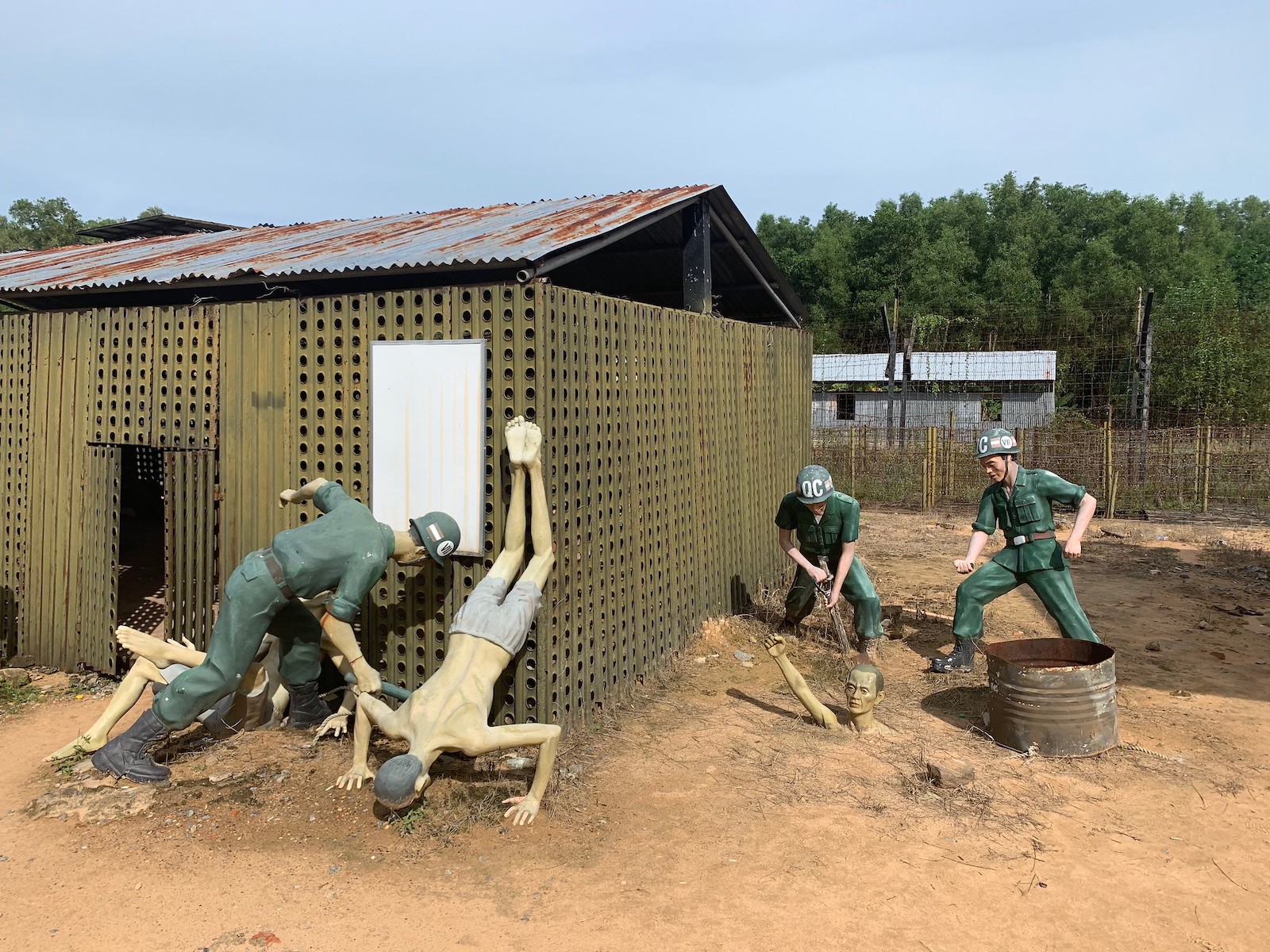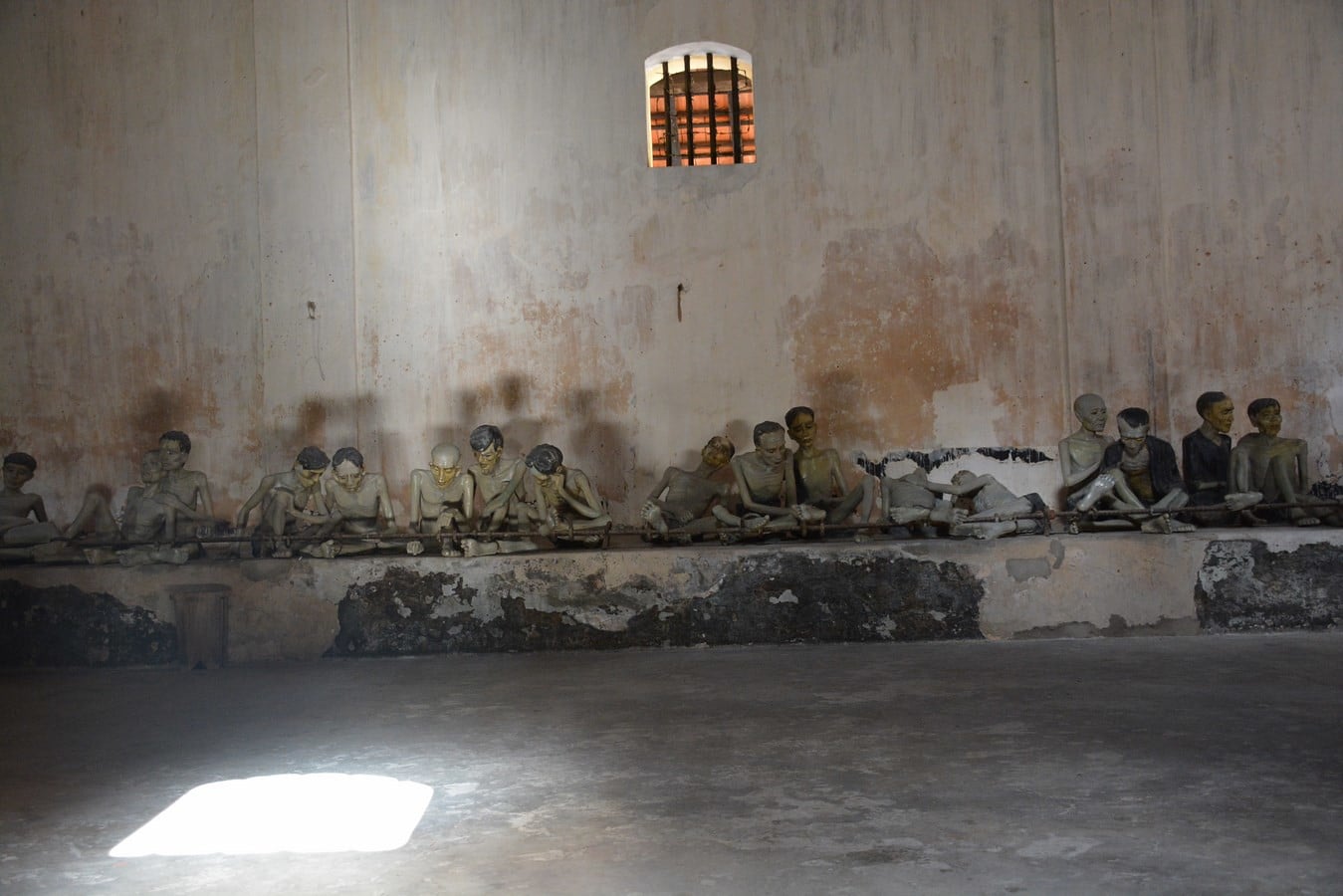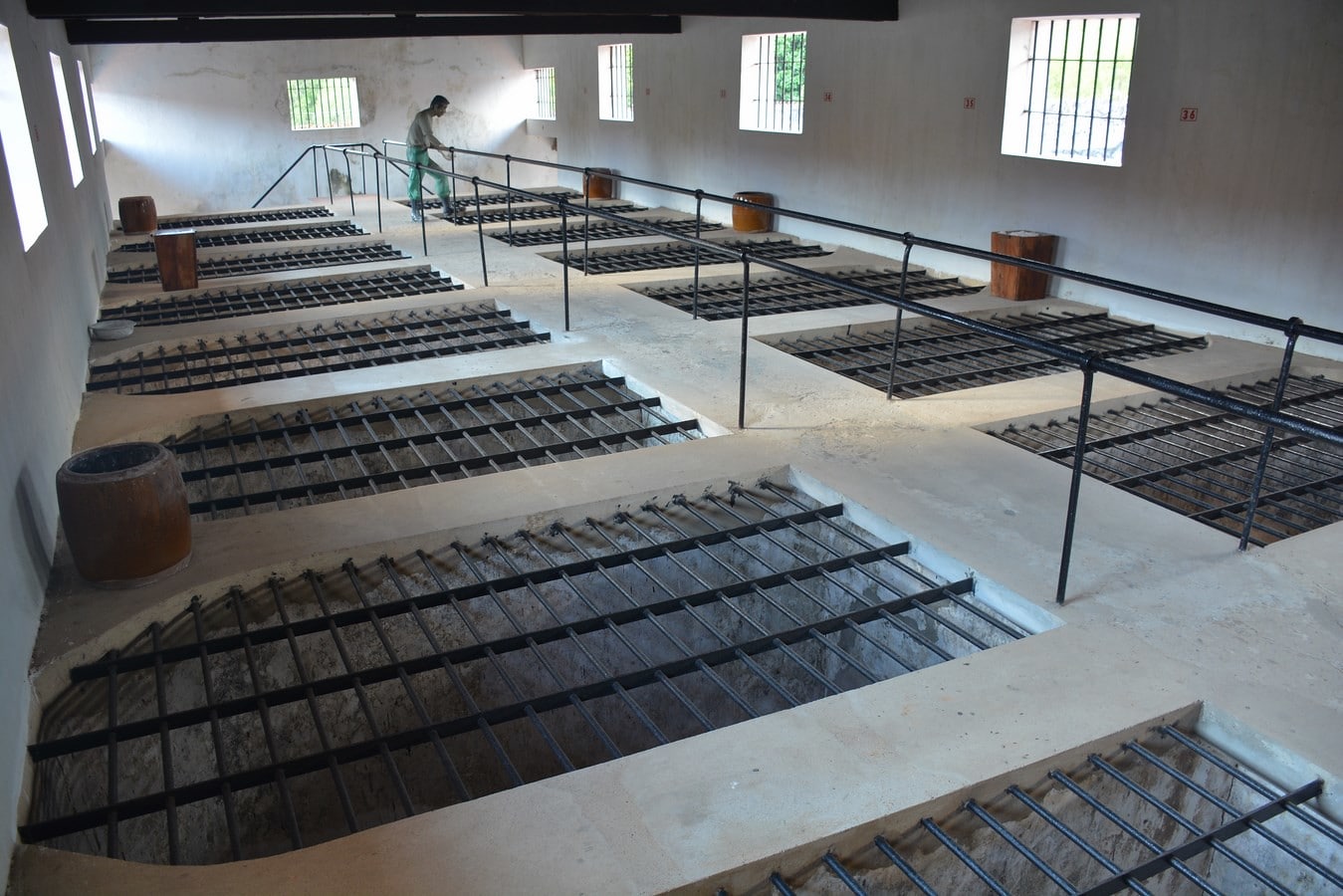Those who are interested in the history of Vietnam should visit its prison museums. From the shackles of French colonist rule to the modern-day horrors of the American War, there’s a lot to learn (and reflect on) in the confines of the narrow walls of these prisons.
These museums will provide you with a jarring look into the grim lifestyle that prisoners had to endure.
1. Phu Quoc Prison – Southeast Vietnam

Phu Quoc Prison was built in 1949 by French colonists. Originally an internment center for political dissidents and renegade thinkers, its scale and notoriety soon grew immensely.
Tthen known as Coconut Tree Prison, it soon held thousands of soldiers, civilians, and political figures who vocally opposed ruling French forces. Conditions at Coconut Tree Prison were particularly vile with many of its former residents returning to society with an extensive list of physical and health problems.
The American War opened a new chapter in the life of Coconut Tree Prison. New sections were added for male, female, and elderly prisoners, and thousands of Viet Cong and North Vietnamese soldiers were detained here.
History of Phu Quoc Prison

Life in Phu Quoc Prison was tough. As you navigate through the complex, you’ll find harrowing recreations of the conditions via lifelike dolls and recreated rooms. These reconstructions give a candid insight into the poor conditions and harsh treatments that the prisoners suffered through daily.
Prisoners at Phu Quoc Prison were subject to unendurable forms of torture such as electric shocks, beatings, hammer-smashed teeth, and even crucifixion. The so-called ‘tiger’ cages found in the courtyards were used to imprison inmates in the most humiliating of fashions – too small to stand in and too short to lie down in, prisoners were forced to kneel on all fours under Vietnam’s searingly hot sun.
A visit by the Red Cross in 1969 revealed the extent of the human rights abuses at Phu Quoc Prison. It’s estimated that 4,000 people died within its confines and, much like the earlier prisoners at Coconut Tree Prison, many of its former inmates returned to society with a laundry list of health issues.
In 1993, the importance of Phu Quoc Prison was cemented when it was named a historical monument and it opened its doors to the public soon after. It can be found off Highway 46 in Phu Quoc Island. Tours run daily from the hours of 07:30 am to 11 am, with another round of tours taking place between 1:30 pm and 5 pm.
2. Hoa Lo Prison – Hanoi

What remains of the infamous Hoa Lo Prison will be enough to stir the blood of those who witness it in person. Sarcastically named the ‘Hanoi Hilton’ by imprisoned American forces, Hoa Lo’s (meaning ‘’fiery furnace’’) history dates back long before the War. Much like Phu Quoc’s Coconut Tree Prison, Hoa Lo was built by the French.
Originally, the prison was called Maison Centrale (Central House) and held those who vocally opposed French rule. Objectors were subject to harsh punishments such as torture and even execution. After multiple expansions and renovations, Mansion Centrale soon began to epitomize the ghastly exploitation by the colonists and the systematic mistreatment of the Vietnamese people.
History of the ‘Hanoi Hilton’

August 5, 1964, proved to be a pivotal date in the story of Hoa Lo Prison. Everett Alvarez Jr, an American pilot, was shot down and became the first American prisoner. As the war dragged on, more and more U.S. troops were detained and the prison was given the ironic nickname of the Hanoi Hilton, a reference to the popular hotel chain.
Conditions at Hoa Lo were awful. American troops were beaten, tortured, and isolated from each other and were forced to write favorable letters about the conditions in their correspondence with the outside world. Notable inmates included future Presidential candidate John McCain, and Pete Peterson – the first U.S. ambassador to a unified Vietnam.
Conditions, however, did improve from 1969 until the American War concluded in 1973. Once the American troops were allowed to live together, morale increased greatly. Hoa Lo continued to operate until its demolition in the mid-1990s.
Today, all remains of Hoa Lo Prison have been turned into a poignant museum. Here, visitors can gather an idea of what conditions were like and see macabre exhibits such as the French guillotine – a shocking reminder of humanity’s bloody past.
The Hoa Lo Prison Museum is located at No. 1 Hoa Lo Street in Hoan Kiem, Hanoi. It’s open from 8 am until 5 pm every day.
3. Con Dao Prison – Ba Ria-Vung Tau

Built way back in 1861, Con Dao Prison is one of the oldest penitentiaries in Vietnam. It was established by French colonists and was primarily built to house those convicted of the most severe crimes.
Throughout the years, it gained notoriety for its brutal conditions and penchant for harsh treatments. The worst of these was the tiger cages.
Built to obliterate any rebellious sinew that the Vietnamese had towards the French rulers, the cages measured 5 feet wide and 8 feet long and would hold anywhere from 3 to 5 prisoners at a time – far too little room for one to have any sort of personal space.
History of the Tiger Cage Prison

Prisoners were held in deplorable conditions without any clothing. Suffering from extreme hunger and dehydration, they often appeared emaciated and frail. With the hot sun beaming down on them, they’d have tender skin, which would chafe against their shackles.
Much like the other prisons featured here, you’ll find unsettling reconstructions of inmates in the tiger cages. Depicted as thin and morose, they paint a ghastly picture of what life was really like in Con Dao Prison.
The horrors of Con Dao’s tiger cages were featured in a 1970 article in Life magazine. It was the first time the Western public had been made aware of its horrors. Two years after the American War ended, Con Dao closed its doors.
Today, it can be visited in the form of a poignant prison museum located on the island of Con Doa. To get here, you will need to take a ferry from the port of Vung Tau. Bear in mind that this is a long journey. Once you get to Con Dao Prison, you will need to pay a small admission fee.
4. Son La Prison – Northwest Vietnam

Located in the center of Son La and at the apex of Khau Ca Hill, Son La Prison was once regarded as one of the most terrifying and unpleasant prisons on the entire continent. It was built in 1908 and, of course, held numerous political prisoners.
Today, all the remains of Son La Prison are dilapidated ruins. There is, however, an on-site museum where visitors can develop an insight into the miserable lives of the inmates. You’ll hear how the prisoners had to walk over 200 kilometers (137 feet) in chains.
Discover detailed oil paintings depicting prison life. See photos of the shackles used to bound the unfortunate souls who lived, died, and were buried here.
The basement level steel showcases the grim-looking solitary confinement cells and even a few tiger cage cells. Seen as a place of reflection and remembrance, Son La Prison serves as a dark reminder of a bygone era. Vietnam may be peaceful and united now, but it took a lot of sacrifices for it to get there.
Son La Prison can be found in Son La Town, which is around 7 hours away from Hanoi. Tours operate from 8:30 am until 4 pm.
Vietnam’s prison museums are not for the faint of heart. Though years have passed since they were last in use, their rough conditions and harrowing features still cause bone-chilling horror in today’s visitors.


 Con Dao Prison – Ba Ria-Vung Tau
Con Dao Prison – Ba Ria-Vung Tau